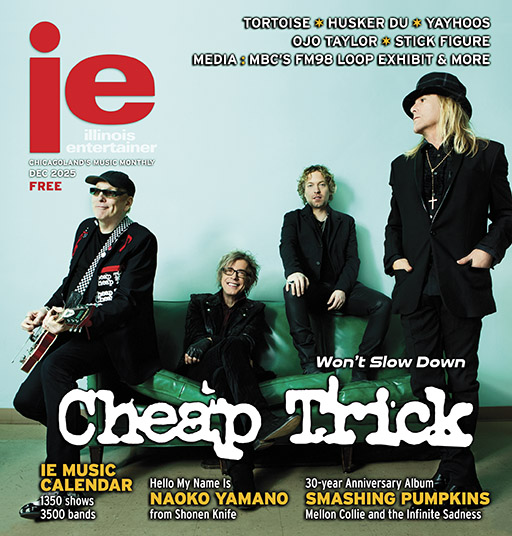Reggae Love

Americans have always had an odd relationship with reggae. In the ’70s, Lee “Scratch” Perry, Third World, and Jimmy Cliff won some attention but never much radio play, which generally means few album sales. Bob Marley managed to break through with digestible nuggets of rock and soul pushing through a cloud of raw reggae rhythms. It was a rarified popularity, however. The gifted Jamaican freedom fighter never gained the magazine covers, constant radio play, and universal recognition when he was alive. As a dead musical icon, his most accessible songs get some airplay on oldies stations and on commercials. His face graces the T-shirts and posters of every college spliff fan, but few can explain the meaning of any of Marley’s lyrics, which they listen to in a smoky haze of righteous cluelessness.
And so goes the American perception of reggae. U.S. sales pale in contrast to Europe, Japan, and basically, the rest of the world. Then dancehall hit in the ’80s and ’90s. Suddenly, myriad salable images popped up, just ripe for record-label marketing machines. There was the hardcore rudeboy, menacing and gleaming with sex appeal of Shabba Ranks, Buju Banton, and Madd Cobra. There was the sassy dancehall girl, swaying her pum-pum short covered backside to wicked riddims of Patra, and dancehall albums climbed the charts and radio playlists while obscure stars like Shaggy and Maxi Priest appeared regularly on MTV with pop-infused hits.
Like trip-hop and “Livin’ La Vida Loca,” though, dancehall enjoyed trendy status with Americans, but by the late ’90s, it was over.
For 2005, the cycle has started again and this time, it’s quite interesting. Two reggae albums, Damian Marley‘s Welcome To Jamrock (Universal) and Sean Paul‘s Trinity (VP), have set the Billboard charts ablaze. Marley made the biggest reggae debut in the chart’s history, selling 86,000 in the first week. Sean Paul debuted at number seven on the Billboard 200, another first for a reggae release. While Marley is more of a roots reggae artist and Sean Paul focuses on dancehall, both performers reflect reggae’s original mission of providing a voice for Jamaica’s, as well as the world’s, downtrodden. For the first time in years, American listeners are clamoring to hear reggae on a major scale. What makes these particular albums appealing to a public that usually ignores the genre? The answer lies in the authenticity and overall effectiveness of the artist’s message, as well as image.
Sean Paul’s lyrics generally concentrate on partying, boasting, and sex. Along with guns, these are the foremost topics for typical dancehall music. However, on Trinity he stretches a bit. The title track (which reportedly refers to the musical trinity of dancehall, hip-hop, and reggae) explains his commitment to survival amid Jamaica’s treacherous political system. “My aim is to stay sane/I never did like and I never did love fame,” he chants with convincing force. On “Never Gonna’ Be The Same,” he laments the murder of his friend Daddigon, a fellow DJ in his crew. The statement is clear: The violence that wrecks Jamaica must stop. If only more of his songs had a message like this.
Most of the 18 tracks of Trinity re-visit the tried-and-true sex and herb lyrics of his previous blockbuster album, Dutty Rock. Nothing wrong with that, except Sean Paul has never been much of a DJ, and if you don’t have a skillful delivery, all that’s left are lyrics and riddims. So there’s not much of a message here, and the beats, like his delivery, are pedestrian at best. A few tunes are genuinely enjoyable but not enough to make this a great album. So why the huge crossover appeal? It’s been about image from day one. Tawny-skinned and laid back, with just the right amount of smoldering sexuality, he boasts an exotic but not too threatening look. Wearing cornrows and baggy yet elegant pants, he’s an easy sell to an American public that wants a hint of Jamaica but not too much. As a former water-polo-playing, pampered son of a noted Jamaican artist and a Portuguese ship captain, Sean Paul never got much respect from Jamaican fans. No matter how gritty his delivery, no matter how nasty the riddim, he lacks authenticity and that will always be the hallmark for a true reggae star.
Damian Marley, on the other hand, has the pedigree to overstep such pitfalls. With a Grammy under his belt for his last album, Halfway Tree, and sharp, politically conscious lyrics, he may be poised to take over where his father left off, alerting the world to the oppression of ghetto life. Welcome To JamRock presents a startling panorama of the struggles and injustices of Jamaican poverty. Tunes like the title track and “Confrontation” smoothly combine one-drop reggae rhythms with touches of dancehall and R&B, couched between socially keen lyrics. With his waist-length locks swinging over fatigues emblazoned with strips of red, green, and gold, he must surely be the savior for ghetto youth everywhere. Except, as the youngest son of Bob Marley and former Miss World, Cindy Breakspeare, he’s never even come close to living in a ghetto.
His songs are convincing but how authentic is their message? Well, as the elder Marley once sang, “He who feels it/knows it.” Damian surely doesn’t know ghetto life like his father did, but that doesn’t mean he can’t identify with those who suffer from it. So his message is there, whatever the level of authenticity. The spitting image of his father, Damian Marley’s image presents a built-in sales tool for his record label to pitch to an American audience that generally only knows the Marley name when it comes to reggae. It’s a winning combination that will probably prove long-lasting, even in a place where reggae flits between trends and fashions every few years.
— Rosalind Cummings-Yeates
Category: Monthly











